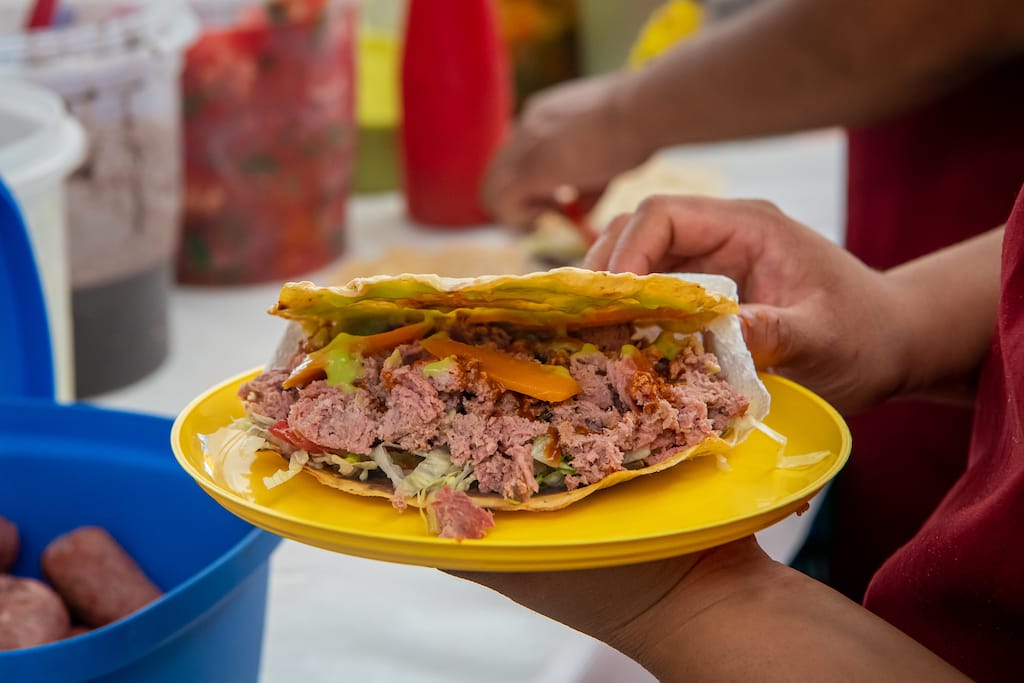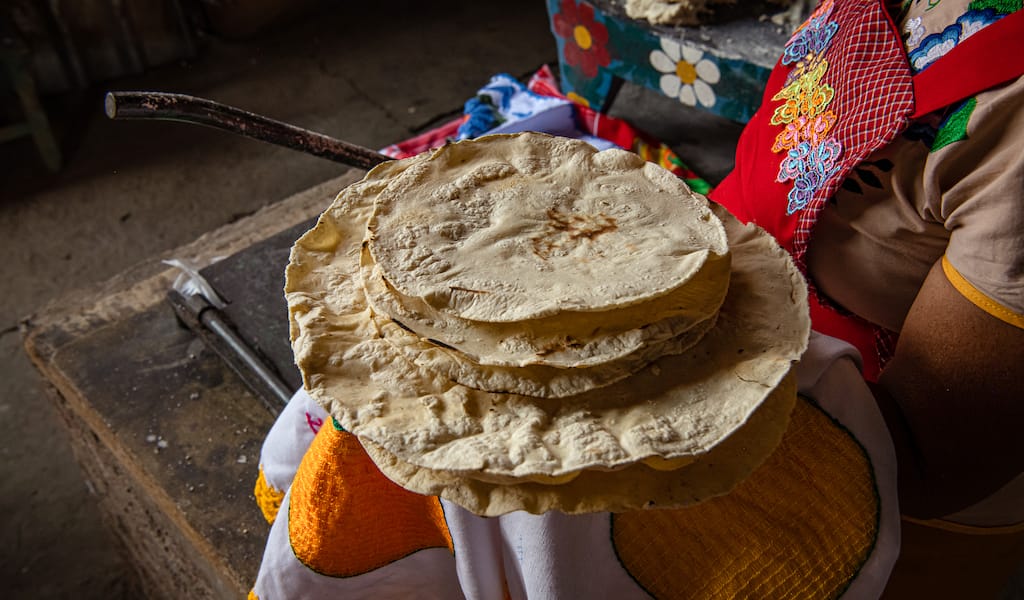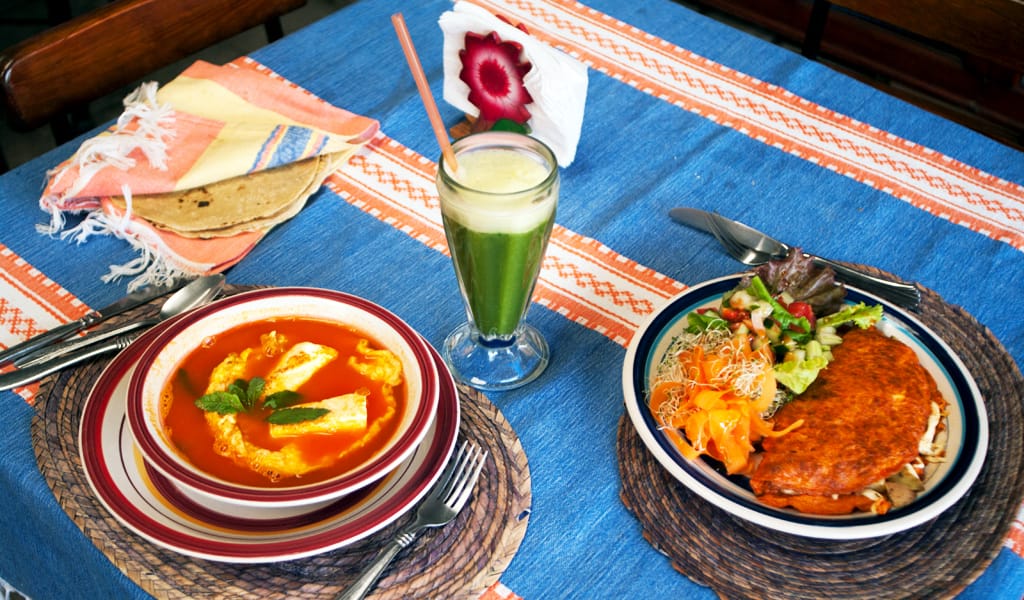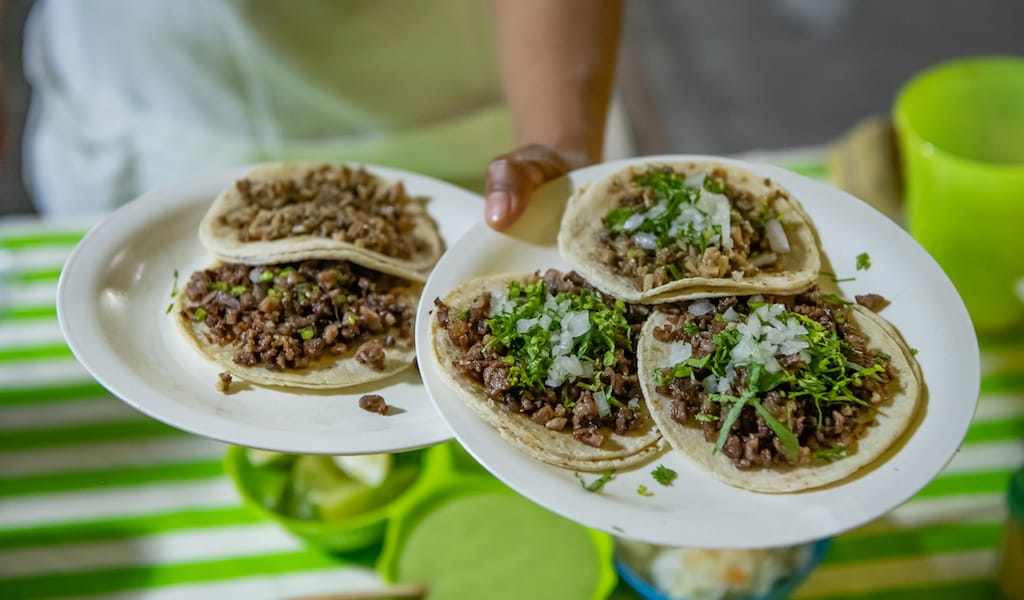The history of Oaxacan food is deeply linked to the concept of adaptation. Our culinary identity has many chapters: the Mesoamerican native period, the colonial reign of Nueva España and the Mexico of the 20th century, which received another wave of immigrants who brought their gastronomic traditions and let them combine with the native and more tropical ingredients of these altitudes. That is the story of the salchicha ejuteca, a European style beef sausage that unexpectedly became one of the most desired foods on the Oaxacan snack table.
While traditional corn-based products are a signature of Oaxacan cuisine, the salchicha ejuteca is an underestimated traditional element in the state’s food landscape. “Nobody knows for sure where the salchicha comes from. What we know is that they were initially produced in my hometown, Ejutla de Crespo. There are a couple of families, particularly the Ortiz and the Hernández Sorroza, who claim to have the first recipe, but vox populi affirms it was first produced by French immigrants who arrived in Ejutla and lived in the outskirts of the village back in the early 20th century,” explains Gabriela Ramírez Mota, age 30, owner of an innovative mobile stall specializing in salchicha ejuteca dishes that sets up every Tuesday and Friday in Oaxaca City’s weekly open air market, better known as a tianguis.
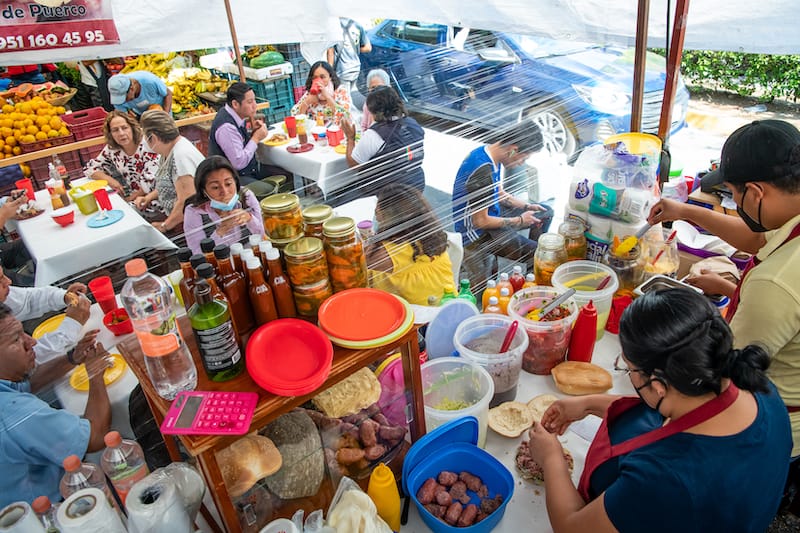
Ejutla de Crespo is a small village of saddlers, farmers, ranchers and traders known for its great mezcal, amazing salchichas and fine leather goods. Located one hour and fifteen minutes south of Oaxaca City, in a strategic point between Oaxaca’s central valleys and the forests leading to the coast region, Ejutla has always been a place where cultures, produce and people cross paths. Its salchicha is the perfect example of that: the umami flavors of smoked and spiced ground beef mixed with fruit vinegar (mainly pineapple) packed up in beef tripe represent a fusion of European-style sausage enhanced by the heat and sweetness of the tropics.
Despite its popularity, Oaxacans, let alone other Mexicans and foreigners, don’t know enough about this salchicha, and they assume the “Oaxacan Sausage” sold in most markets is the authentic version, when it actually is a less artisanal interpretation of the original. “When we were at university studying Business Innovation and Development, we were asked to create a project in which we could sell something that represented us. My then-boyfriend, now husband, and I decided to start selling something that I really missed from my hometown, the salchicha ejuteca, which was not easy to find in the city,” states Gabriela.
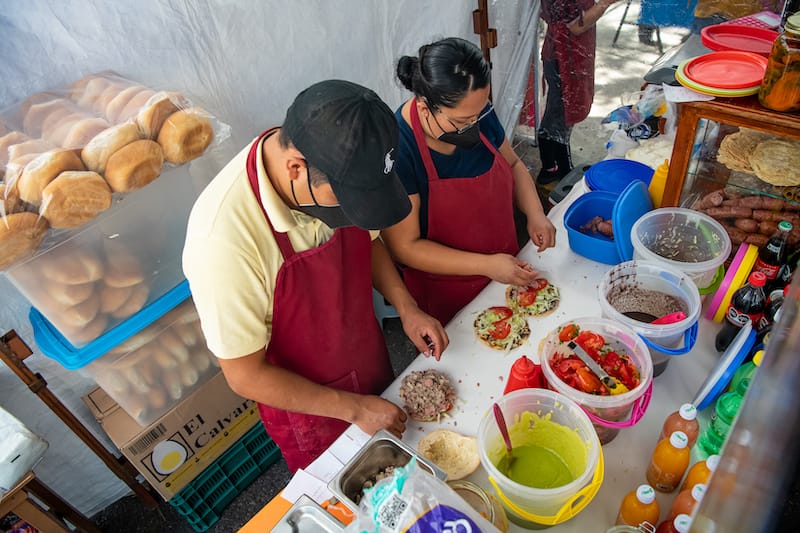
A craving and a desire are what made Gabriela and her husband Daniel López Lorenzo decide to start a business where they could sell authentic salchicha – and its salsa – for the tianguis goers, who are people from all walks of life: officers, constructions workers, students, housewives, professionals of all kinds and, in rare occasions, a few tourists. “We first focused on selling the salsa in fairs and events with some samples of the salchicha. We did not focus on more elaborate sausage dishes, but the salsa became so popular that people started asking for ‘fast eating’ or ‘grab and go’ dishes, so we established a regular stall serving traditional sausage snacks from Ejutla and a few other inventions,” explains Daniel, who was born in the Valley of Etla, two hours north of Oaxaca City, but is an ejuteco (person from Ejutla) by adoption.
The snacks that Gabriela, Daniel, and their team serve all have basically the same base ingredients: sausage, guacamole, black bean paste seasoned with the slightly pungent wild green hierba de conejo (fumaria officinalis), tomato, lettuce, pickled carrot and jalapeño, and a dash of their signature salsa. What vary are the three “vehicles” that carry all these components. First, we have the traditional Ejutla style double stack of tostadas, second, the typical bolillo (similar to a baguette and used across Mexico for sandwiches), and third, pan amarillo from the Valley of Etla (a typical bread made with egg yolks, sugar and wheat flour).

After five years of steady work in the tianguis, Gabriela and Daniel’s goal to educate people about salchicha ejuteca culture is increasingly succeeding. “Our clients have become more informed; they now can differentiate a real Ejutla salchicha from a copycat. Actually, they now crave Ejutla sausages as much as I did when I was a student far from home,” affirms Gabriela. And she is right – as three-year clients, we now know that an authentic salchicha ejuteca needs to have the following elements: a dark brown color, as it has been smoked for hours in a wood oven under slow fire; 100% beef that should never be too fatty; spices and vinegar should be balanced and never overpower the meat. On the other hand, the salsa that goes with it should have a strong flavor of dried chiles mixed with a subtle amount of fruit vinegar.
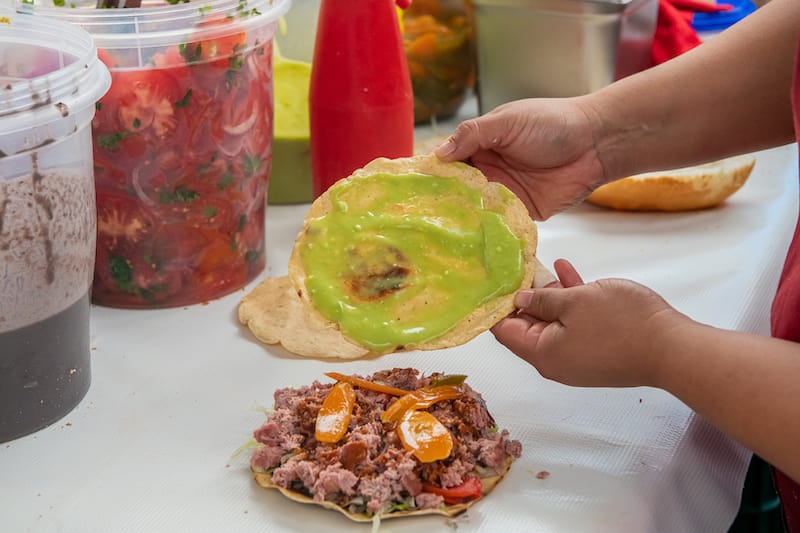
The origin and existence of such a delicacy was – and still is – considered unexpected by most people, regardless of their origin. “I was born in Etla, not in Ejutla, but I am still Oaxacan. The first time I visited Ejutla with Gabriela I saw people in fairs carrying sausages cut in half with its salsa on top. It reminded me of a hotdog or bratwurst you see in the ads or movies. What are the odds, I thought, to have something so un-Oaxacan-looking in a town like this? The flavor, however, was every bit as Oaxacan as one can expect,” reflects Daniel. After all, the typical Oaxacan snack table should never miss tortilla chips topped with sausage slices, dried chile salsa, guacamole, fresh cheese, grasshoppers and, of course, mezcal. Surprisingly, sausage, one of the most European foods, has not only adapted and found a natural place among corn, agave, grassy bugs and tropical fruits, but it has also become another essential element in our local food dictionary.
However, human imagination is just as restless as culinary culture itself, and the salchicha is no exception. The pan amarillo sausage sandwich Daniel invented deserves a special mention: the sweet and soft texture of the bread mixed with the sturdy smokiness of the salchicha and its salsa represent the marriage of two regional culinary traditions. It’s dishes like these that make Oaxaca an endless maze of flavors, techniques and inventions. Every week, Daniel and Gabriela’s stall brings exciting flavors to the palates of customers taking a break from their regular grocery shopping, slowly building a crossroads where interregional cuisine reinvents itself in the sidewalks of Oaxaca’s streets, for the people, and by the people.
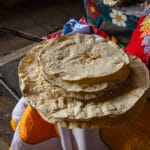 February 27, 2024 Building Blocks
February 27, 2024 Building Blocks
Every time we travel outside of Oaxaca, we get something we call “the tortilla blues.” […] Posted in Oaxaca January 18, 2022 El Pochote
January 18, 2022 El Pochote
El Pochote (named after a thorny, flowering tree native to Central America) is an […] Posted in Oaxaca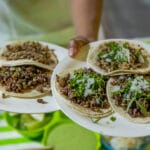 December 31, 2021 Best Bites 2021
December 31, 2021 Best Bites 2021
The year is almost gone and, though many expected it to be free from the waves of chaos […] Posted in Oaxaca
María ÍtakaJalil Olmedo
Published on May 10, 2022
Related stories
February 27, 2024
OaxacaEvery time we travel outside of Oaxaca, we get something we call “the tortilla blues.” Even if we move around inside of Mexico, particularly in the biggest cities, we cannot help missing the sweet aroma and feel of a warm tortilla almost melting in our hands. Sure, we might run into decadent tacos filled with…
January 18, 2022
OaxacaEl Pochote (named after a thorny, flowering tree native to Central America) is an organization of local organic producers in Oaxaca that was founded in November 2003 by local artist Francisco Toledo. The market offers all kinds of products, from vegetables and fruits to prepared meals and juices. The main objective of the market is…
December 31, 2021
OaxacaThe year is almost gone and, though many expected it to be free from the waves of chaos and change that the Coronavirus brought us in 2020, 2021 has proved to be just as challenging. But, at the same time, it has been more interesting than ever. It’s been a year of transition, with everyone…







































